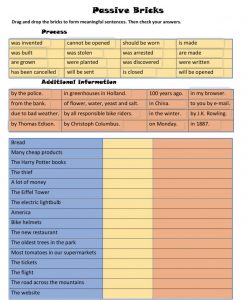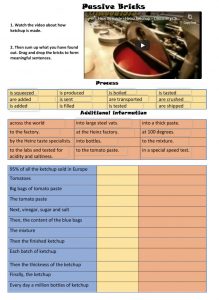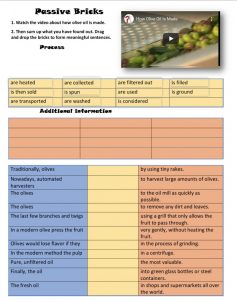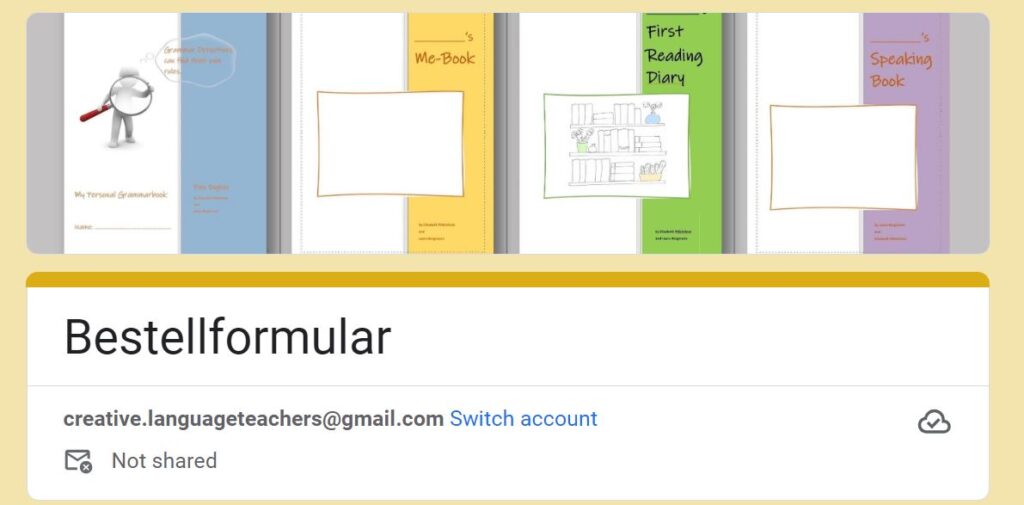Just a few simple activities
to practice the passive form in meaningful contexts.
Tip: Avoid all kinds of transformation exercises (active into passive :-() They are highly unnatural. Passives are used in order to highlight specific parts of a sentence — by simply changing active to passive the original message of the sentence will also be changed!!! Many of these transformed sentences would never be produced by a native speaker.
Passive Bricks (by David Newby)
Here is one of my online versions of this game.

The most obvious topics to teach the passive are crazy inventions or descriptions of how things are made.
In these topics it is likely that you will find phrases like:
it is made of…//it is used for…// it is produced by…// something is added …// wrapped…// shipped…// sold…
I have used the following short video many times. Students listen once and find out how ketchup is made. Then we watch again and see where the speaker uses passives and where they use active voice. Obviously, the passive tends to be used where machines are involved or where the focus is on the process rather than the humans who do them.
Students then watch another video from the “how it’s made” series on youtube and summarize the steps in about 10 sentences. They consciously choose active voice where people are doing things and passive voice where the focus is on the production process, often involving machines. Of course, using the passive here is not the only correct option. Many of the “how it’s made” videos use hardly any passives. Therefore, let’s not overdo it — passives can be useful, but overusing them will make any text clumsy and wordy.
Another warning: Don’t teach how to form the passive in all the different tenses. If your tasks are meaningful and authentic, the students will use the correct tenses automatically anyway. The same is true for shifting pronouns and time expressions. Just make sure your tasks have a clear and realistic context and trust your learners’ brains.
e.g.: Nowadays, books are made in large printing companies…. but in the Middle ages, books were written by hand.
Try this live worksheet based on the above video:

Try this worksheet:

Another warning: Passives tend to be used in food processing videos, but they are NOT used in cooking recipies. English recipies just say: add, stir, bake, fry, measure…because in these cases we think of a person preparing the food in the kitchen and see them DOING things personally.
Follow-up Task (Homework)
As a nice follow up (or homework) task to these practice activities you could ask your students to find another video from the “How it’s made” series on youtube. The learners watch different videos on topics of their interest. They then choose one and summarize the main steps in about 10 sentences. For each sentence they should consciously decide whether they prefer to use the active or the passive form. If they focus more on the person doing something, they will use active verbs, if they focus on the process or the machine, they will probably use the passive form.
A new variation using AI:
The learners could ask AI to summarize a “How it’s made” video of their choice in 10-15 sentences. They could then analyse where and why the AI has used active or passive constructions.




